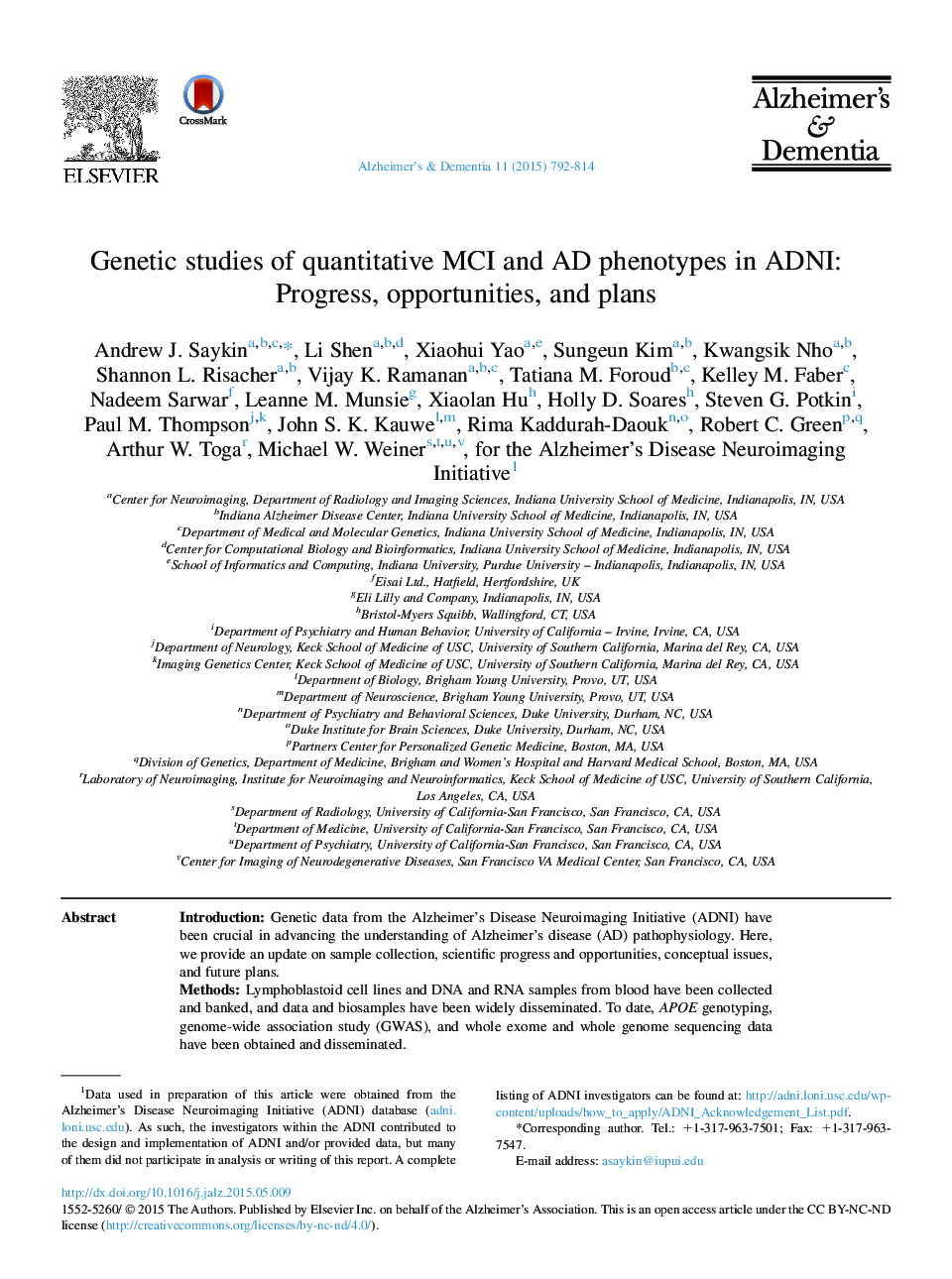| کد مقاله | کد نشریه | سال انتشار | مقاله انگلیسی | نسخه تمام متن |
|---|---|---|---|---|
| 5622671 | 1406185 | 2015 | 23 صفحه PDF | دانلود رایگان |

IntroductionGenetic data from the Alzheimer's Disease Neuroimaging Initiative (ADNI) have been crucial in advancing the understanding of Alzheimer's disease (AD) pathophysiology. Here, we provide an update on sample collection, scientific progress and opportunities, conceptual issues, and future plans.MethodsLymphoblastoid cell lines and DNA and RNA samples from blood have been collected and banked, and data and biosamples have been widely disseminated. To date, APOE genotyping, genome-wide association study (GWAS), and whole exome and whole genome sequencing data have been obtained and disseminated.ResultsADNI genetic data have been downloaded thousands of times, and >300 publications have resulted, including reports of large-scale GWAS by consortia to which ADNI contributed. Many of the first applications of quantitative endophenotype association studies used ADNI data, including some of the earliest GWAS and pathway-based studies of biospecimen and imaging biomarkers, as well as memory and other clinical/cognitive variables. Other contributions include some of the first whole exome and whole genome sequencing data sets and reports in healthy controls, mild cognitive impairment, and AD.DiscussionNumerous genetic susceptibility and protective markers for AD and disease biomarkers have been identified and replicated using ADNI data and have heavily implicated immune, mitochondrial, cell cycle/fate, and other biological processes. Early sequencing studies suggest that rare and structural variants are likely to account for significant additional phenotypic variation. Longitudinal analyses of transcriptomic, proteomic, metabolomic, and epigenomic changes will also further elucidate dynamic processes underlying preclinical and prodromal stages of disease. Integration of this unique collection of multiomics data within a systems biology framework will help to separate truly informative markers of early disease mechanisms and potential novel therapeutic targets from the vast background of less relevant biological processes. Fortunately, a broad swath of the scientific community has accepted this grand challenge.
Journal: Alzheimer's & Dementia - Volume 11, Issue 7, July 2015, Pages 792-814